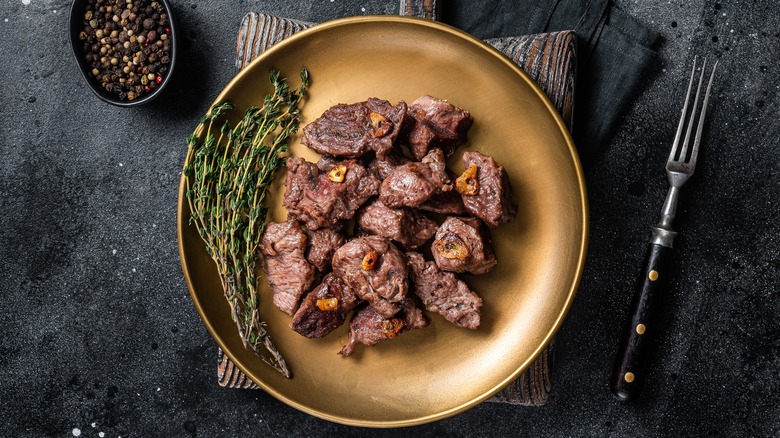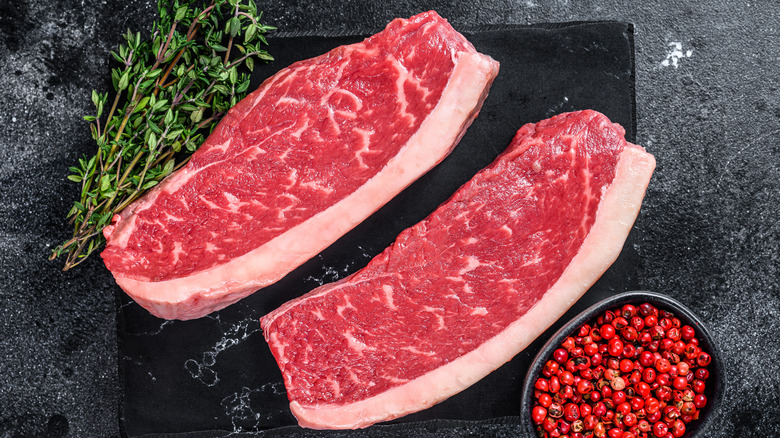The Cut Of Meat Steak Tips Come From
There are a lot of cuts of steak out there, so you'd be forgiven for being confused over a term like "steak tips." You'll surely recognize some of the big ones — your filet mignons and New York strips — but for every porterhouse and ribeye there is a cut you may have never heard of before, like the flap steak or Denver steak. Like the nondescript "stew meat," found in your local grocery, steak tips are a name that throws total ambiguity into beef names. This isn't much of an issue for something like chicken, but since different cuts of beef often require very different times, temperatures, and types of cooking, not knowing what you're buying can be a serious obstacle.
Part of steak tips' unclear nature likely comes from their regional status. According to Inside Hook, steak tips are a popular cut of meat in New England, but not found as commonly in the rest of the country. Like tri-tip steak, which is most popular on the West Coast, steak tips appear to have evolved from a local tradition of using up leftover or otherwise undesirable cuts of meat. That explains its deliberately vague name, but the question of where steak tips come from remains. Are you getting a grab bag of different cuts? Or can you count on steak tips to bring consistent quality to your meals every time?
Steak tips are usually sirloin
Steak tips come as bite-sized cubes and ends, and while those pieces can come from a few different sources, ButcherBox notes that they usually come from the sirloin. Sirloin is a popular meat as it's both a flavorful and affordable cut. However, according to The Spruce Eats, the flavor of sirloin comes at the expense of texture, as it can be tough and relatively low in fat. If you are looking for steak tips, Cook's Illustrated recommends looking for ones specifically labeled "sirloin tips," as they come from the portion of the sirloin that has the deepest flavor.
Like any lean beef, steak tips can be delicious but require specific forms of cooking to make them tender and at their best. If you're cooking them quickly, use a skillet or grill, but you'll need to marinate them first to break down the tough tissue. But if you have the time, they'll come out best being braised in the slow cooker or incorporated into a stew. The one thing you'll want to avoid, no matter how you're cooking steak tips, is overcooking them, as their lack of fat means they can easily dry out and become tough.
Despite these precautions, steak tips are quite versatile and a great, cheap cut of beef for a weeknight meal. Now that you know what you're working with, you shouldn't hesitate to work the cut into your protein rotation.

